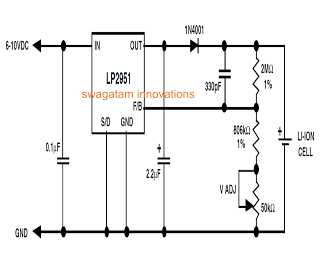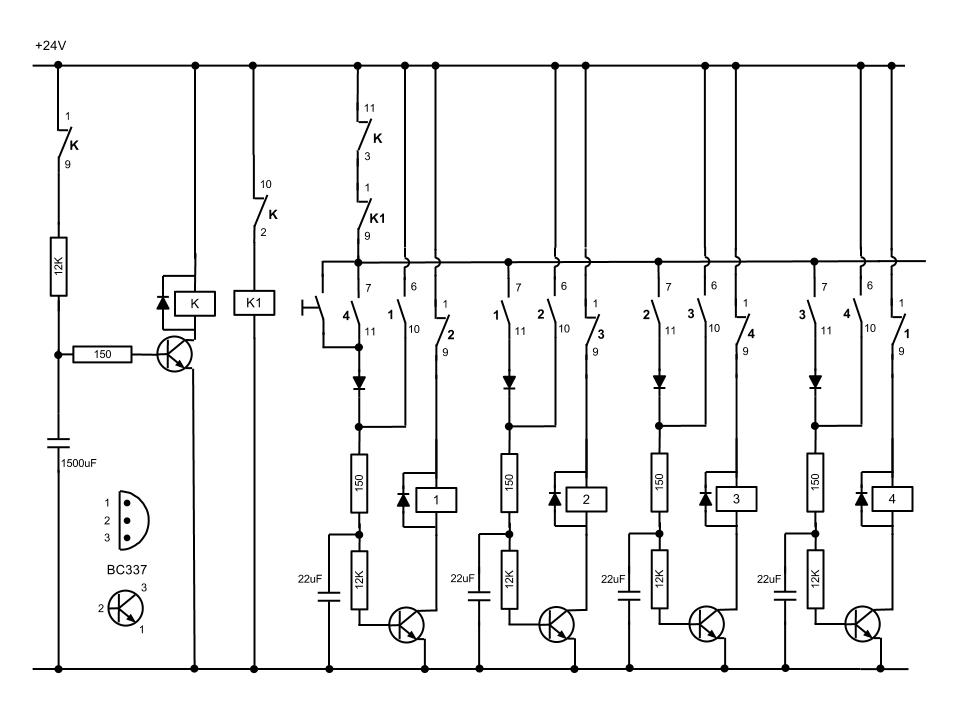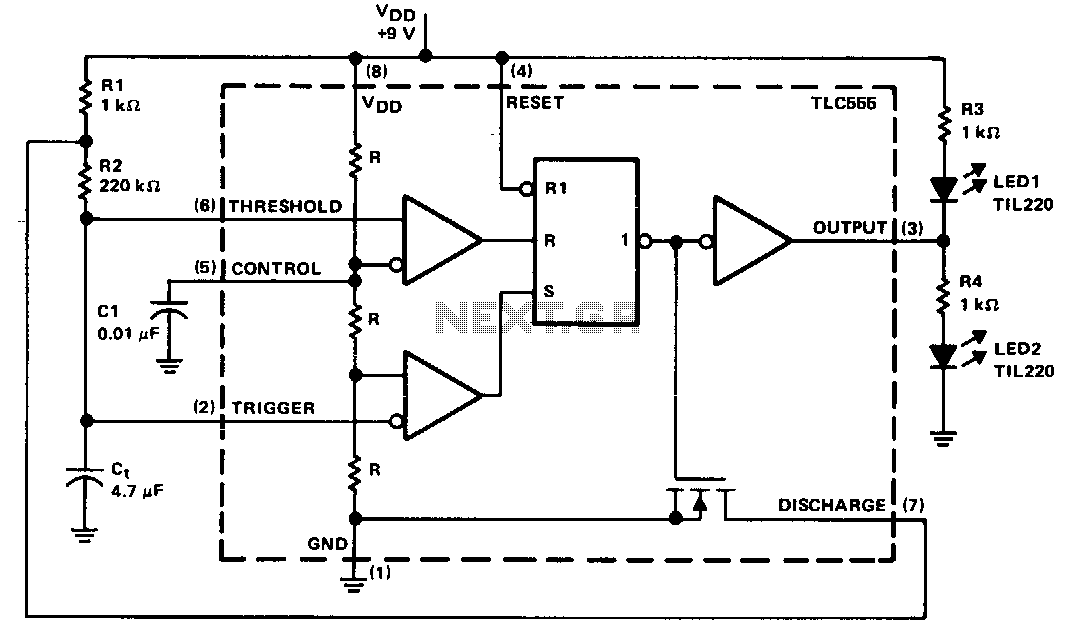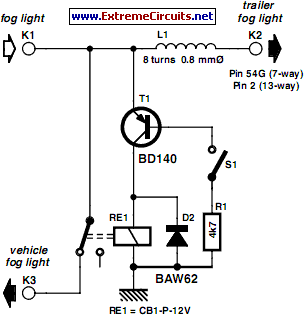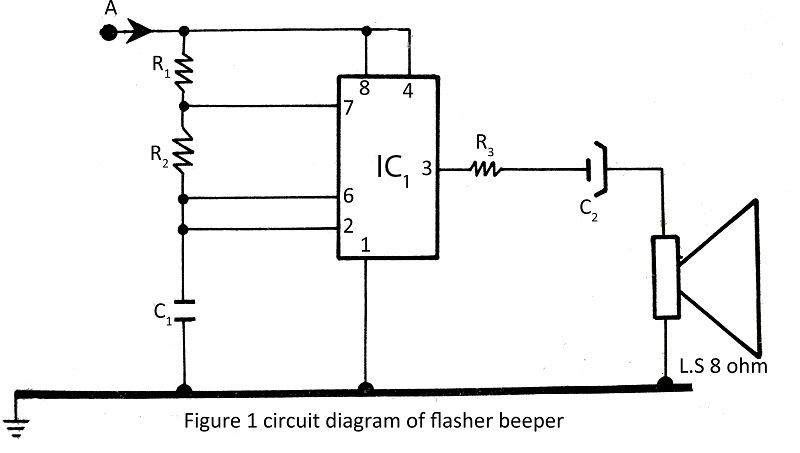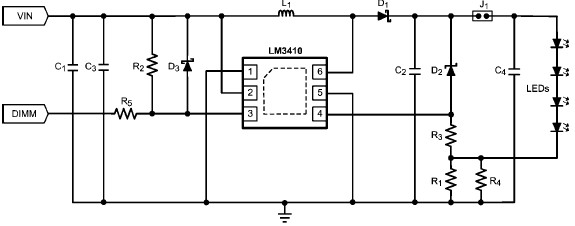
Lamp flasher using LM317

This document describes a lamp flasher circuit utilizing the adjustable voltage regulator IC LM317T. The LM317 can supply a maximum current of 1A, making it suitable for use with lamps up to 12W. This type of circuit has significant applications in the automotive industry. The flashing frequency is determined by the values of resistors R1 to R3 and capacitors C2 to C4. With the specified component values, the circuit achieves a flashing rate of approximately 5 flashes per second.
The lamp flasher circuit is designed to provide a visual signaling mechanism, commonly used in automotive lighting systems for indicators or decorative lighting. The LM317T voltage regulator is a versatile component known for its ability to maintain a steady output voltage despite variations in input voltage or load conditions. In this application, it is configured to control the flashing of the lamp.
The circuit operates by charging and discharging capacitors C2, C3, and C4 through the resistors R1, R2, and R3. The resistors and capacitors form an RC timing circuit, where the values selected dictate the charging and discharging times, thus determining the flash rate. The use of multiple resistors and capacitors allows for fine-tuning of the desired flashing frequency.
For implementation, the circuit can be powered by a standard automotive voltage supply (typically 12V). The output from the LM317T can be connected to the lamp, which will flash according to the established timing parameters. Safety measures should be taken to ensure that the circuit components are rated appropriately for the automotive environment, where vibrations and temperature fluctuations may occur.
In summary, this lamp flasher circuit using the LM317T voltage regulator is an effective solution for creating visual signals in automotive applications. The design's flexibility in adjusting the flash rate through resistor and capacitor selection makes it a valuable tool for engineers and hobbyists alike.Here is a very useful lamp flasher circuit using the famous adjustable voltage regulator IC LM317T. LM317 can source up to 1A of current and so up to 12W lamps can be used with this flasher. Such a circuit finds huge application in automobiles. The frequency of the flashing depends on the value of resistors R1 to R3 and capacitors C2 to C4. With th e given values; the flashing rate is around 5 flashes per second. 🔗 External reference
The lamp flasher circuit is designed to provide a visual signaling mechanism, commonly used in automotive lighting systems for indicators or decorative lighting. The LM317T voltage regulator is a versatile component known for its ability to maintain a steady output voltage despite variations in input voltage or load conditions. In this application, it is configured to control the flashing of the lamp.
The circuit operates by charging and discharging capacitors C2, C3, and C4 through the resistors R1, R2, and R3. The resistors and capacitors form an RC timing circuit, where the values selected dictate the charging and discharging times, thus determining the flash rate. The use of multiple resistors and capacitors allows for fine-tuning of the desired flashing frequency.
For implementation, the circuit can be powered by a standard automotive voltage supply (typically 12V). The output from the LM317T can be connected to the lamp, which will flash according to the established timing parameters. Safety measures should be taken to ensure that the circuit components are rated appropriately for the automotive environment, where vibrations and temperature fluctuations may occur.
In summary, this lamp flasher circuit using the LM317T voltage regulator is an effective solution for creating visual signals in automotive applications. The design's flexibility in adjusting the flash rate through resistor and capacitor selection makes it a valuable tool for engineers and hobbyists alike.Here is a very useful lamp flasher circuit using the famous adjustable voltage regulator IC LM317T. LM317 can source up to 1A of current and so up to 12W lamps can be used with this flasher. Such a circuit finds huge application in automobiles. The frequency of the flashing depends on the value of resistors R1 to R3 and capacitors C2 to C4. With th e given values; the flashing rate is around 5 flashes per second. 🔗 External reference
